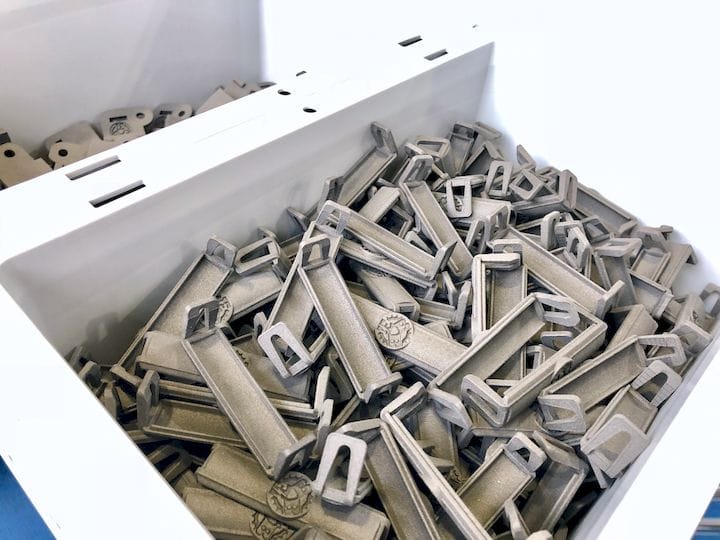![3D printed parts freshly cleaned by PULVERMEISTER’s Typ2 post-processing device [Source: Fabbaloo]](https://fabbaloo.com/wp-content/uploads/2020/05/image-asset_img_5eb09e340b24c.jpg)
After our story last week about a new post-processing company, PULVERMEISTER, we learned a great deal more.
For those that haven’t seen the previous story, the German startup company, officially founded only a few months ago in August 2018, but under secret development since early 2017, has developed a near-fully automated process for post-processing SLS 3D prints. These are typically nylon prints made in EOS SLS equipment.
It turns out that post-processing EOS prints was in fact the inspiration behind the development of the system. PULVERMEISTER’s managing partner, Luigi Monaco, explained that his previous company sought a workspace to run a very office-unfriendly EOS P110 for production of chip tuning housings. It seems there they discovered the need for more advanced post-processing solutions.
Their development began with a prototype they named the “Typ1” in February 2018. A complete machine was achieved in June 2018, and sent to a friendly client for testing. This was used to ensure their design approach ensured consistent post-processing quality, along with the labor savings through automation of the necessary steps. Their test client, badass eBikes, received great benefit. Monaco explains:
“badass eBikes is doing the complete production of a week (3 build compartements) now every Friday in less than 5 hours with a standardised output and reusage of the extracted powder.”
That’s with their original prototype, the Typ1. At formnext 2018 we saw the Typ2 machine , which is able to handle considerably more volume. Monaco explains:
“Typ2 is built to handle approx. up to 55kg of powder this includes e.g.: eos FORMIGA P110, eos P396, 3D Systems ProX SLS 500, 3D Systems sPro 60 HD, 3D Systems ProX SLS 6100.”
They’re also working on a special adaptor to ensure the Typ2 can accommodate build chambers from virtually any SLS system up to 55kg.
The system has proven so successful that they are now developing a “Typ3” unit that could have a capacity of up to 200kg. This would enable it to handle output from even larger SLS systems.
I should note that the capacity of even the Typ2 is significant: the work cycle on the device is so fast that it completes far faster than a 3D printer can produce a build chamber to post-process. In fact, PULVERMEISTER says a single Typ2 device could “easily handle 10+ EOS P110 machines”, and likely far more depending on usage.
At this stage they are just completing development of the Typ2 device and are interested in seeking prospective clients who would like to perform tests on the device to see if they could benefit from the automation and consistent quality of finished parts.
PULVERMEISTER is planning on completing the Typ2 development so they can offer the machine for sale to the public by the beginning of second quarter of 2019, with an expected price near €139,000 (US$158K).
We are inspired by companies such as PULVERMEISTER, who recognize that the problems to be solved in 3D printing often range far beyond “printing parts”. While some printer manufacturers tweak minor efficiencies out of their printing process, the remainder of the work cycle is often ignored.
Via PULVERMEISTER











